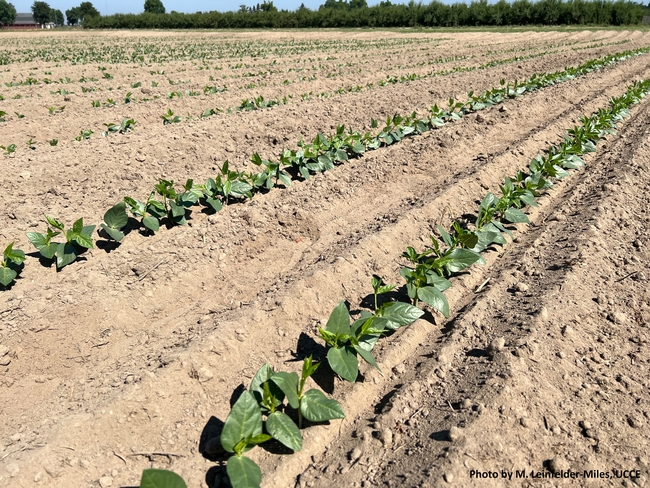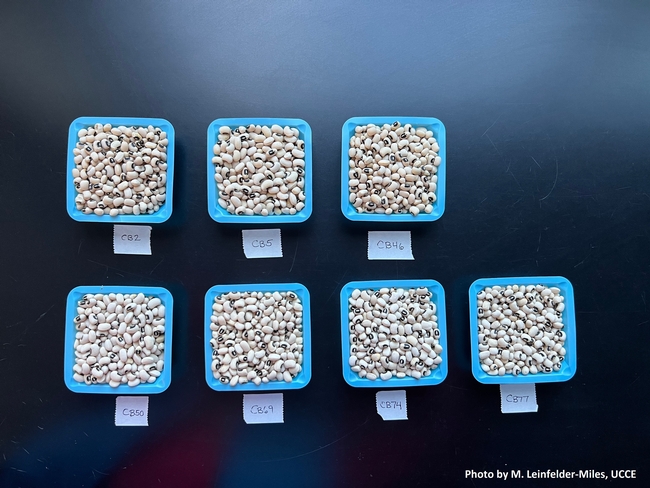
The trial was planted in a field of CB46, and fertility and pests were managed by the grower in the same manner as the field. Data are presented in Table 1. Stand counts were made approximately two weeks after planting on July 20th. The stand was assessed as the number of plants per two-foot length. Twelve replicate counts were averaged. We evaluated aphid and lygus damage on September 8th, which were low due to the grower's management. For lygus, we took 10 sweeps from four locations in each plot and counted the lygus. Data were averaged and are presented as a 10-sweep count. For aphids, we used a rating scale from 0 to 10 that accounted for visible crown damage and aphid incidence. In addition to the in-field assessment of lygus, we also evaluated harvest samples for stings and found that, on average, about 1.2 percent of the beans had lygus damage. No diseases were observed.
We harvested on November 6th. All six rows of each variety were cut and raked into one windrow. At the time of cutting, the grower observed that CB77 plants were laying flat, but they were laying in such a way that the knives still picked up the plants. The grower also observed that CB74 had an upright growth habit that could potentially make it a variety viable for swather cutting. We evaluated 100-seed weight as a measure of seed size, evaluating five 100-seed samples per variety.
We would like to thank the cooperating grower, the CA Crop Improvement Association for funding regional trials, and the CA Dry Bean Advisory Board for assistance with statewide research prioritization and assistance with outreach.
Table 1. 2023 Blackeye Bean Variety Evaluation Results

